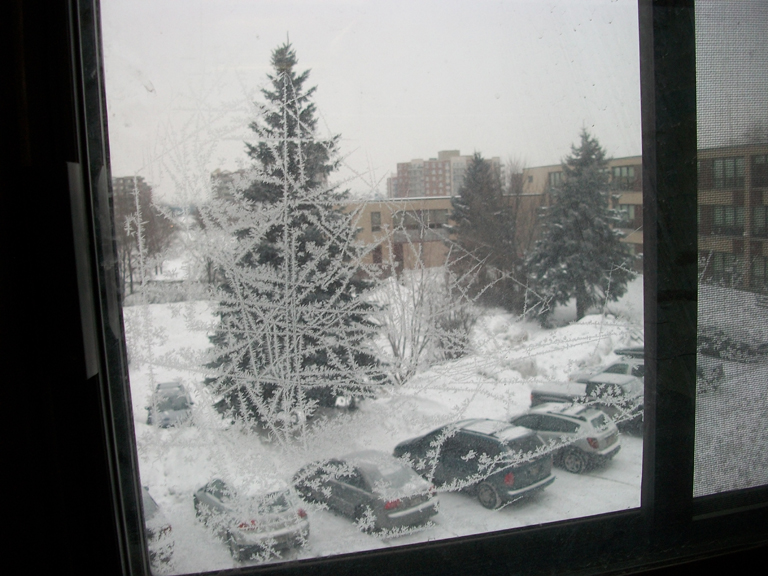One of them went out and ate the fluffy form of H2O, like we did when we were children,and then he fell back and made snow-angels. The other student just couldn’t wait for the week’s second snowfall.
Too accustomed to snow, as Canadians we associate it with shoveling and difficult driving conditions. We dream of escaping the cold and forget what a privilege it is to live in a land of ice and snow at a point in history when thanks to technology and science we can enjoy and understand snow. Unlike our Nordic ancestors, we are not condemned to shivering in a storm with inadequate clothing and poorly insulated shelter. In a country endowed with hydroelectricity, it is so easy to stand in warmth and to watch a cascade of transient crystals land on a window.

We know why it is truly rare for two snowflakes to be alike because their patterns depend on their immediate environment. The slightest changes in pressure or temperature can affect the shape; as one drop of water crystallizes it releases energy, changing the destiny of an immediate neighbor. And yet all these differences represent variations upon a theme: all flakes have six sides and six needles. In the three dimensions of its solid form, snow molecules maximize the number of intermolecular attractions between themselves. Specifically, the oxygen of one H2O molecule attracts two hydrogen atoms from two different molecules.
Conversely, each of water’s hydrogen atoms bonds to an oxygen atom from two different H2O’s. A staggered hexagon results with a water molecule at each vertex. Even when, in the smallest of snowflakes, this arrangement is repeated about three billion trillion times, the basic pattern remains the same.
But enough said about chemistry. Snow is also the framework for the spirit of the holiday season. A few months ago my daughter was told there was no Santa and that parents were the ones filling the stockings on Christmas Eve. She approached me on the subject but seemed more curious than sad, so I told her a “transition-truth”. I told her that Santa is a spirit who gets into parents and makes them buy the gifts that children desire. In previous years we had written to Santa Claus together, but last week she wrote the letter, sealed the envelope, walked past me, and headed to the mailbox. I said, “Wait. Aren’t you going to tell me what you asked for?”
“No,” she replied. “You will be filled with the spirit of Santa and you’ll know what to get me.”
Let’s hope that the snow does not melt before Christmas.